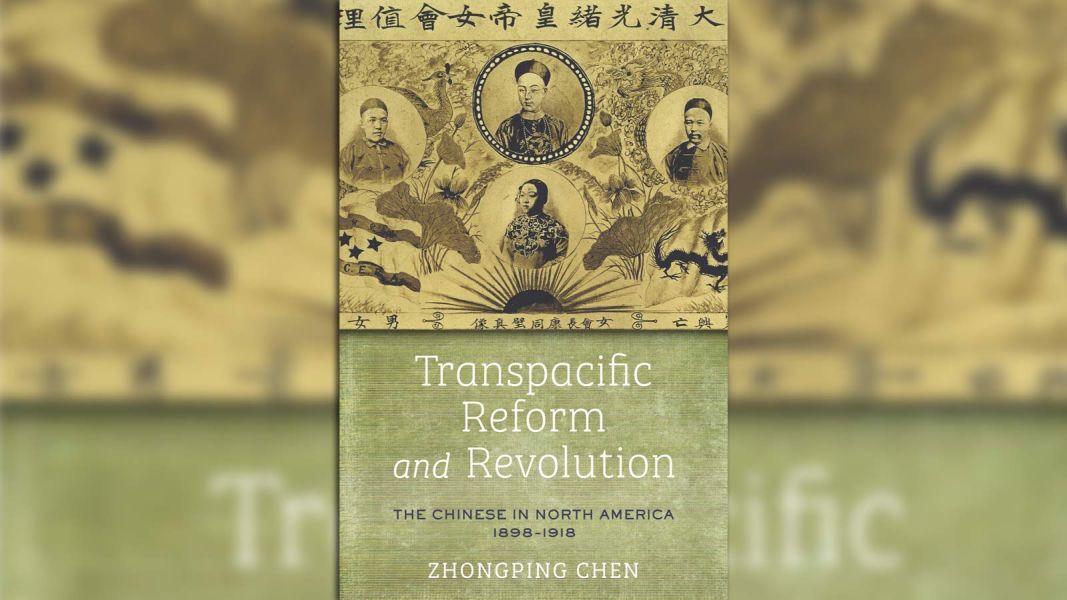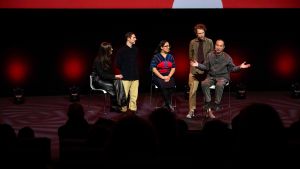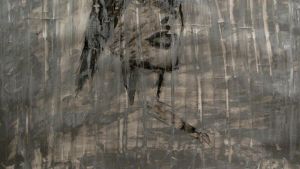
Transpacific Reform and Revolution: A Conversation with Zhongping Chen
In Transpacific Reform and Revolution: The Chinese in North America 1898–1918 (Stanford University Press, 2023), Zhongping Chen traces the networks in which reformers around Kang Youwei and revolutionaries around Sun Yat-sen operated. Chen focuses mostly on Canada and the United States. His time frame is the period between the failure of the Hundred Days’ Reform in 1898 and 1918, a time when, as he writes, Sun Yat-sen ‘and his followers turned to the militant fight for a single-party state’ (p. 14). This is a fascinating study that shows Chinese reformers and revolutionaries of the period in an entirely new, much more pragmatic light. Chen discusses the status Kang and Sun had in their networks and the way these networks operated—from business activities and funding through membership fees, to the lawsuits they levelled against each other, and even assassinations. Chen also shows how they clashed with other Chinese communities, such as Chinese Christians or others living in Chinatowns, over ideology and business, and how they negotiated a tricky relationship with the West (both its politics and its different social groups). Transpacific Reform and Revolution forces us to rethink not merely reform and revolution, but also reformers and revolutionaries, as well as the political parties that emerged from their activities in the early republic.
Elisabeth Forster: I was surprised by the extent to which violence—especially assassination—was part of the repertoire of the late Qing. You write about how Kang Youwei had to hide from Qing assassins and how he had himself planned to dispatch anti-Qing assassins. I have also always been surprised by how common a tool assassination was in the early republic and later under Chiang Kai-shek’s Kuomintang. Of course, Song Jiaoren was famously assassinated. Given your very interesting discussion of how the various societies and associations of the late Qing transformed into political parties after 1911, should we trace these republican-era assassinations as a political tool back to the practices of the late Qing? Or is this a different tradition?
Zhongping Chen: This question hits a vital point of my book because the project started with an investigation into mysteries around the assassination of the well-known late Qing reformer and statesman of early republican China, Tang Hualong (1874–1918) in Victoria, Canada, by Sun Yat-sen’s revolutionary partisans in 1918, and its historical narrative ends with my attempts to solve these mysteries. But the book treats such violent assassinations merely as one key reflection of historical change in modern Chinese political culture at home and abroad between 1898 and 1918.
As the US National Commission on the Causes and Prevention of Violence indicated in its detailed report more than half a century ago, political assassinations occurred in China, Japan, and in the West. But in some Western democratic countries like the United States, domestic assassinations in mainstream society were usually the product of individual passion or derangement rather than the planned actions of leading politicians, political parties, or ruling governments. For example, most assassins of American presidents exhibited mental illness, but not necessarily political motives (Kirkham et al. 1970: 2–6).
However, in modern China and the Chinese diaspora, political assassinations happened for different reasons. Previous studies have demonstrated how republican revolutionaries used assassination in their fights against Qing officials from 1903 to 1907, and especially in the period from 1910 to 1912. They were inspired by the ‘roving knights’ (遊俠) in Chinese history, anti-authoritarian Russian anarchists, militant nationalism, revolutionary heroism, and so on. Most scholars are also familiar with the stories of assassination of political opponents by the ruling governments in the republican period, ranging from Yuan Shikai’s military regime in the early 1910s to the Nationalist government under Chiang Kai-shek’s control from the 1920s to the 1940s.
Compared with these previous studies, my book shows that revolutionary parties and the ruling governments from the late Qing to the early republican period were not the only ones who used assassinations to deal with their political enemies. In fact, late Qing reformers like Kang Youwei and revolutionary partisans under Sun Yat-sen’s leadership also used assassinations to deal with one another. Tang Hualong’s assassination in 1918 is just one of several cases discussed in the book, although my study mainly reveals the interpersonal, institutional, and ideological interconnections between the two political factions.
The employment of assassinations by these different political forces in modern China and the Chinese diaspora not only reflected the serious ideological divergences among these groups but also exposed the lack of political pluralism or tolerance of different opinions among them. Modern China failed to produce a stable parliament (except for a short-lived one in 1913) or other public sphere in which the ruling government, reformist parties, and revolutionary partisans could engage in peaceful discussion and rational debate. Thus, each of these political forces would tend to use assassinations and other violence to silence and even remove their political opponents or competitors. The Qing government tried to assassinate reformers like Kang Youwei or kidnapped revolutionaries like Sun Yat-sen in foreign lands mainly because these political dissidents entered transnational worlds beyond its direct control. Yuan Shikai and Chiang Kai-shek’s regimes in the republican period chose to assassinate domestic dissidents because they could not arrest and execute them under the institutional format of the republican system, as the Qing Dynasty could do within its national borders.
So, certainly, this violent tendency started with the autocratic rulers of the Qing government and the ruling regimes in the republican period. It naturally provoked the same kind of violent responses from the anti-state revolutionaries and reformist dissidents, and its impacts even affected the interactions between reformers and revolutionaries.
EF: I was fascinated by the fact that both Kang Youwei and Sun Yat-sen were just two among many, even in their own organisations. You describe how Kang Youwei was given a less than central appointment by the Guangxu Emperor during the Hundred Days’ Reform. You write that in 1899 Kang’s own secretary warned Chinese merchants in Victoria that Kang’s cause was a failure. In the early republican era, as you discuss, some people refused to swear loyalty to Sun Yat-sen personally as part of their membership of the Chinese Revolutionary Party. Simultaneously, however, both Kang and Sun had what almost amounts to a cult of personality in their own lifetimes. How did these contradictory phenomena occur? And why were Kang and Sun, rather than others, made the symbolic figureheads of their respective movements?
ZPC: This is an important question about the sad paradox in my book’s discussion of the political history of modern China and the Chinese diaspora. Both Kang Youwei and Sun Yat-sen were new leaders of modern Chinese politics and they promoted, respectively, political reform towards a constitutional monarchy and a revolutionary movement towards the establishment of the Republic of China. They introduced and promoted Western ideals, such as human rights, gender equality, constitutionalism, republicanism, and even democracy, to modern China. But they also tried hard to build their personal power and even a personal cult in their respective parties, and to pursue their partisan hegemony in Chinese politics at home and abroad.
Because both Kang and Sun were the major initiators, agitators, and organisers, they naturally became the symbolic or actual heads of their respective movements. Certainly, my book also discusses how Kang’s and Sun’s interactions with other political leaders and especially overseas Chinese activists were crucial for the development or decline of their movements.
It is important to note that both Kang and Sun fought hard for constitutional reforms or the republican revolution in China and overseas Chinese communities. But inside their respective parties, neither had built an institutional check on their own power or that of other leaders, such as periodic elections and term limits. As Lord Acton (John Emerich Edward Dalberg-Acton) wrote in 1887, ‘absolute power corrupts absolutely’. Kang Youwei evidently embezzled the overseas Chinese investment in his reformist organisation’s business ventures to finance his luxury travels and lifestyle because there was no check on his power within his own party.
More importantly, modern China and the Chinese diaspora from the late Qing to the early republican period faced increasingly serious crises in domestic politics and in the face of foreign threats and mounting racism. Thus, all Chinese at home and abroad hoped to save and strengthen China under a strong leader, a strong party, and a strong state. This helped push political leaders like Sun Yat-sen to build their personal power and partisan hegemony. After the Republic of China was established in 1912 and then usurped by military strongman Yuan Shikai and his succeeding generals, Sun led his revolutionary party in a continual fight for the restoration of the 1912 Provisional Constitution and the 1913 Parliament. But by 1918, after the failure of his previous political efforts, he finally turned to building his one-party state through military methods, including assassinations of political opponents, and China entered the worst phase of its modern history: the warlord period that lasted from 1916 to 1928.
EF: The economic dimension of the activities of reformers and revolutionaries was incredibly interesting to me. For what was the money Sun Yat-sen acquired through his extensive fundraising specifically used? Was it for propaganda? Or for hiring military personnel? Moreover, you write: ‘The leaders of the American CKT [Chee Kung Tong, Zhigongtang 致公堂, literally “Active Justice Society”] headquarters in San Francisco’ harboured an ‘old grudge over Sun Yat-sen’s failure to reward them for their anti-Qing actions’ (pp. 177–78). What kinds of rewards did they have in mind? The transactional nature of these revolutionary activities is intriguing.
ZPC: The economic dimensions that I highlight in the book are not only about the financial foundation of both movements, but also relate closely to their political ends and military means.
In terms of the reformist movement under the leadership of Kang Youwei, he used overseas Chinese investments to develop business ventures, including firms, banks, and even a railway company in Hong Kong, New York, Mexico, and other places. Kang used these businesses both as the financial sources for his political movement and to unite transnationally dispersed migrants from China. Such overseas Chinese investments enabled him to plan an abortive military rescue of the reformist Guangxu Emperor in southern China in 1900, to sponsor many reformist newspapers and other institutions in China and throughout the world, to bribe Qing officials for the domestic legalisation of his party, and even to support his global travels. The eventual failure of these business ventures also contributed to the internal strife and final collapse of Kang’s reformist organisations and movement.
As for the revolutionary movement under the leadership of Sun Yat-sen, he relied mostly on secret societies and occasionally the cooperative Qing armies for his 10 failed anti-Qing uprisings between 1895 and 1911. He urgently needed to raise funds from overseas Chinese for military expenditure, including payments to the members of the secret societies and cooperative soldiers, to support newspapers for political propaganda, and for the operation of his party machine. In North America, he tried to get both political and financial support mainly from the America-based Chee Kung Tong, which was also called the Chinese Freemasons. Even after Sun Yat-sen became the provisional president of the newly founded Republic of China in early 1912, he still needed overseas Chinese financial support in his fight against military strongman Yuan Shikai and the future warlords.
When Sun founded his first anti-Qing revolutionary organisation in Honolulu in November 1894, he had promised a $100 return for a $10 investment in his revolutionary cause. Rather than the financial rewards, however, the Chee Kung Tong was more interested in achieving mainstream political legitimacy and aimed to register as a political party after the Republic of China was founded in 1912. Sun Yat-sen promised to endorse the attempt, but his revolutionary governments never fulfilled his promise. As a result, his party later split with the North American Chee Kung Tong, as my book details in its final chapter.
EF: Connected to the previous question, I wonder about the level of commitment of the majority of members of the Chinese Empire Reform Association (CERA, 保皇会) and Sun Yat-sen’s various organisations. Were some coaxed into this by, as you write, their networks, so that they were perhaps members in name and membership fees, rather than in activity and spirit? Were some more attracted by CERA’s business empire than its reformist cause?
ZPC: My book uses the network approach to analyse both CERA and revolutionary parties under Sun Yat-sen’s leadership because both types of political associations recruited their members not only through the influence of their patriotic and progressive ideologies and organised activities—as previous studies have stressed—but also through kindship, friendship, native-place fellowship, and other interpersonal ties. However, from the reformist to the revolutionary parties, their networks demonstrated a continual tendency towards a higher level of institutional development. Any Chinese migrant could join CERA by adding their name to its membership roll, and they were not required to pay membership fees at the beginning. They joined CERA because of the influence of Kang Youwei’s propaganda for patriotism, progressive reform, and the promise of rewards and even high official positions after the success of the reformist cause.
Compared with CERA, the successive revolutionary parties under Sun Yat-sen’s leadership had stricter requirements for their members from the beginning. Their members were required to complete admission forms and take oaths of loyalty to the revolutionary cause by holding the Bible or swearing to Heaven. They were later required to write a pledge of obedience to Sun Yat-sen’s leadership, to affix their thumbprint to the pledge, and to pay regular membership fees, and so on.
Although previous studies by scholars like Joseph W. Esherick and Marie-Claire Bergère have proven that Sun Yat-sen and his Revolutionary Alliance did not play a major role in the Republican Revolution around 1911, Sun was finally able to defeat his political opponents and competitors, including the late Qing reformers, largely because of the careful and continuous construction of his parties towards a higher level of institutionalisation, such as the development of central leadership, a stable membership, and so on.
EF: I wonder what it meant to be ‘Chinese’ to overseas Chinese (to use this term, even though you discuss how the term is contested in your preface) in North America? One aspect that stood out to me here was class, specifically the different treatment received by members of the working classes and members of the elite (like Kang Youwei and Sun Yat-sen) from both Westerners and the Chinese communities themselves. For example, you describe how labourers were banned from entering the United States through the Chinese Exclusion Act of 1882. But Sun Yat-sen, of course, could visit the United States in 1896 because he had student (that is non-labourer) status. Moreover, Kang Youwei seemed to be living a very privileged life most of the time and interacted with high-ranking American figures. Meanwhile, people living in Chinatowns were the victims of discrimination and riots. Another aspect in the context of what it meant to be Chinese are the disagreements you describe between Kang Youwei and Chinese Christians in the United States, during which the latter rejected Kang’s slogan of ‘Protect the Confucian religion’. Did being ‘Chinese’ mean the same thing to all these different groups?
ZPC: In my book, the conceptual discussion about the Chinese diaspora stresses not only its members’ transnational dispersal from China but also their cross-cultural hybridity, including their interactive relations with homeland politics, host-country culture, and co-ethnic communities across the world. Certainly, they also demonstrated cross-ethnic or sub-ethnic diversities in terms of their different native-place origins in China, disparate class and socioeconomic backgrounds, dissimilar religious beliefs, and, especially, divergent political ideologies along reformist and revolutionary lines.
Nonetheless, my book uses network analysis of the heterogeneous Chinese diaspora to demonstrate how its members developed their transnational and cross-cultural connections through their reformist and revolutionary associations and movements, including Chinese Christian churches, newspapers, and political drives. They also developed such diasporic networks through their closer attachments to reformist or revolutionary politics in the homeland, and through identification with Western culture, ranging from constitutional monarchism to republicanism in Canada and the United States. This kind of unprecedented level of relational development is what I call a ‘network revolution in the transpacific Chinese diaspora’.
Reference
Kirkham, James F., Sheldon G. Levy, and William J. Crotty. 1970. Assassination and Political Violence. New York, NY: Bantam Books.





